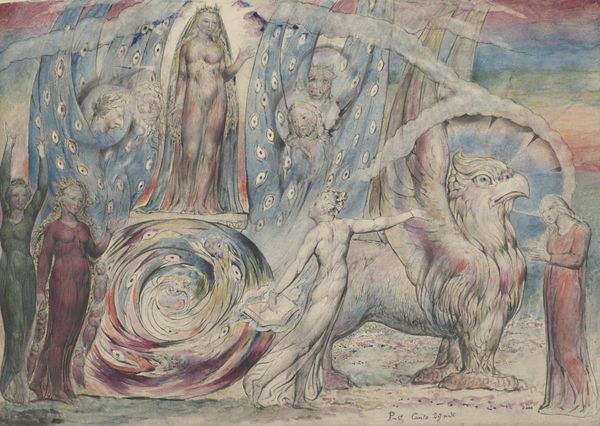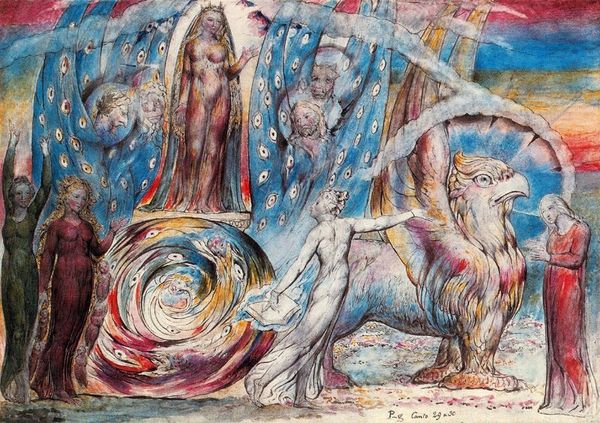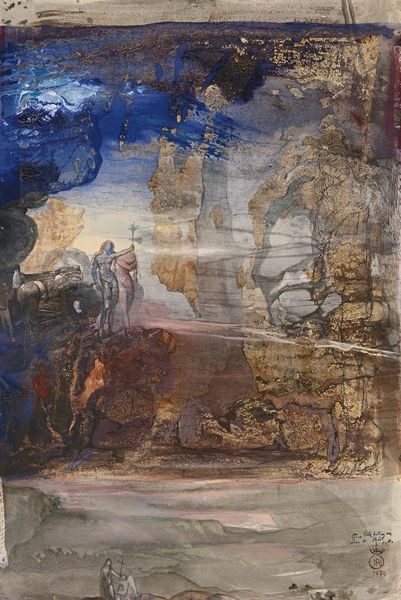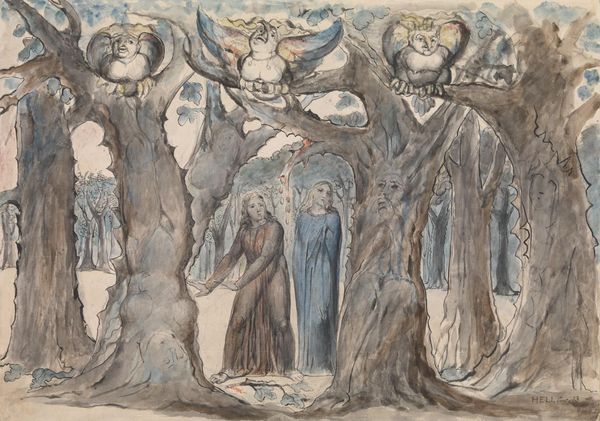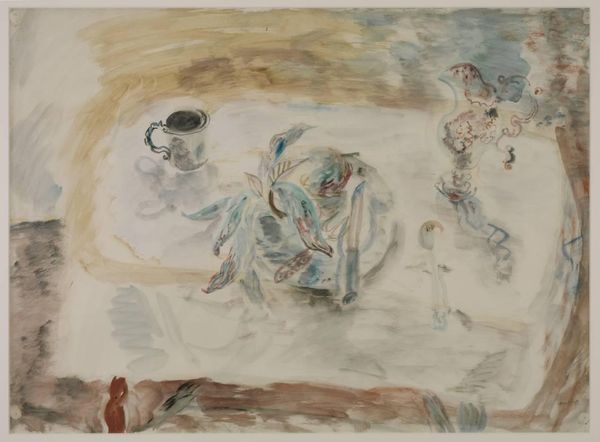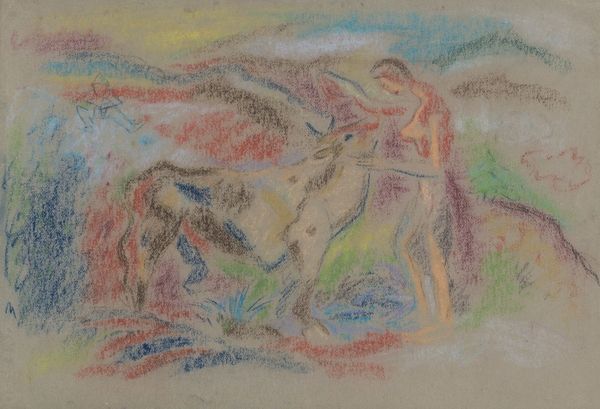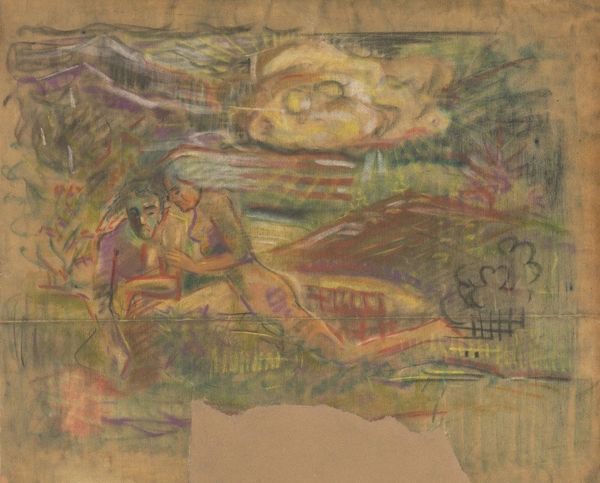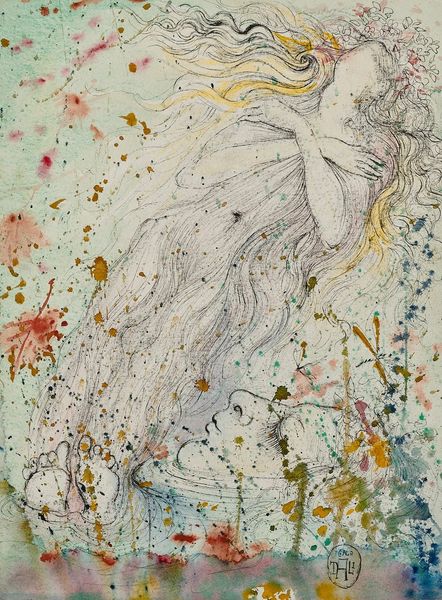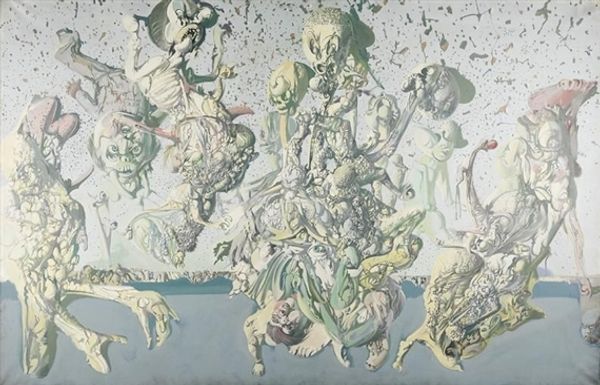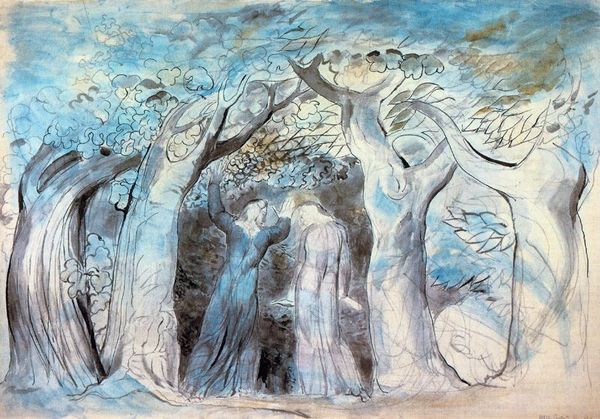
Dimensions: support: 372 x 527 mm
Copyright: NaN
Curator: William Blake’s watercolor, Beatrice Addressing Dante from the Car, presents a fascinating, if somewhat ethereal, visualization of Dante's Divine Comedy. Editor: Right, it's like stepping into a dream, isn't it? The colours are so soft, and the whole scene feels otherworldly. Curator: Precisely. The composition utilizes a spiral form, drawing the eye towards Beatrice enthroned amidst swirling, eye-laden drapes that certainly command the viewer’s attention. Editor: The eyes add an interesting, almost unsettling, layer. It makes you wonder what Blake was trying to say about being watched, or perhaps guided, on this spiritual journey. Curator: Indeed. We see a convergence of the allegorical and the symbolic, rendered through Blake's unique vision. Editor: For me, the beauty is that it remains open to interpretation. It's a glimpse into the soul, and everyone will see something different. Curator: Well said. Blake's work consistently invites such personal readings. Editor: A beautiful and complex creation that sparks the imagination long after you look away.
Comments
tate 8 months ago
⋮
http://www.tate.org.uk/art/artworks/blake-beatrice-addressing-dante-from-the-car-n03369
Join the conversation
Join millions of artists and users on Artera today and experience the ultimate creative platform.
tate 8 months ago
⋮
At the end of The Divine Comedy, Dante is guided through Heaven by Beatrice, his ideal woman. Here she is surrounded by the four apostles, depicted as embodiments of the symbolic animals with which they are traditionally associated. Luke resembles an ox, a creature Lavater described as severe and simple, while Mark appears as a lion, which Lavater saw as strong and bold. John has the face of an eagle, which, according to Lavater, means he ‘must be a brave man’. Matthew is shown as a man with idealised, Christ-like features that seem to echo those of Beatrice. Gallery label, March 2011
